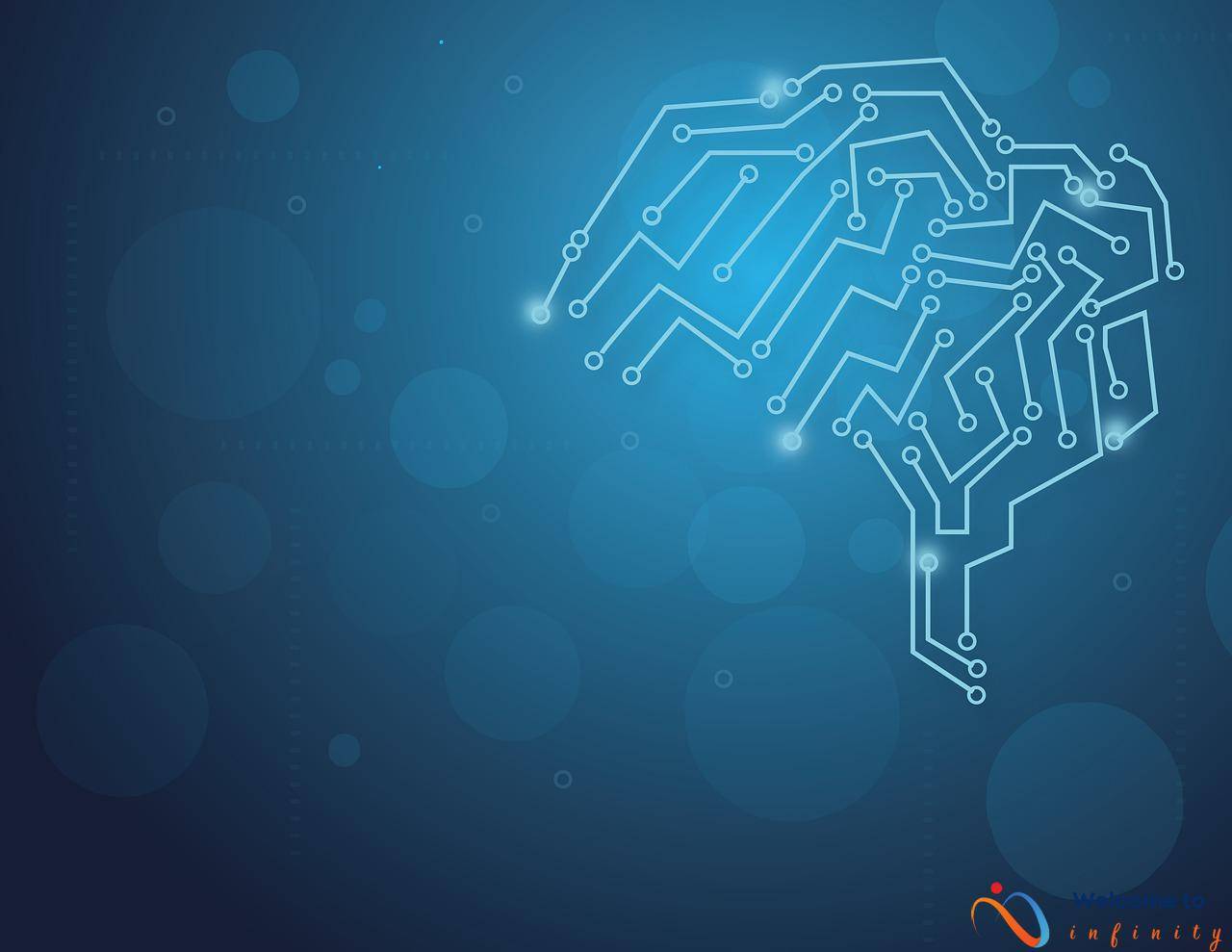Augmented Reality (AR) has rapidly evolved in recent years, bringing new ways to interact with the digital world. AR allows users to experience a blend of virtual and real-world environments and provides a unique experience like never before. However, with the integration of artificial Intelligence (AI), AR experiences have become even more immersive and personalized. The combination of AI and AR is a game-changer that can redefine how users interact with digital content.
By merging AR and AI, users can enjoy more personalized and interactive content in various fields such as education, healthcare, and gaming. AI-powered AR systems can analyze user data, understand behavior and preferences, and adjust the content accordingly. This provides a personalized experience for each user, increasing user satisfaction and engagement.
AI algorithms play a vital role in improving AR experiences. With the help of AI, AR systems can analyze user behavior and preferences, providing customized and engaging content. Additionally, AI-powered AR can provide real-time feedback, making the overall experience more enjoyable.
AR applications powered by AI can analyze user behavior and preferences, creating a unique experience that caters to each individual user. This allows content providers to target specific demographics and increase user engagement. The AI algorithms learn from user behavior, adjust the content accordingly, and provide a personalized experience for each individual user.
AI-powered AR systems can provide feedback to users in real-time, enhancing the overall experience. The system can analyze user behavior and suggest changes to optimize the user's interaction with the environment. This allows users to have a more interactive experience and increases their engagement with the content.
AR applications can be used in education to provide interactive content that enhances learning. AI algorithms can analyze the user's progress and provide personalized feedback to improve the learning process. This provides a more engaging and accessible learning experience for students.
By integrating AI algorithms into AR systems, the interface becomes more user-friendly and intuitive. Users can interact with the environment using natural language and gestures, making the experience even more immersive and enjoyable. The AI algorithms learn from user behavior, making AR systems more efficient and effective.
The integration of AI and AR opens up new opportunities for various industries, including healthcare, education, and entertainment.
AI-powered AR applications can assist healthcare professionals in remote patient monitoring. By providing real-time data, AR can help with the diagnosis and treatment of patients. Additionally, AR can be used for medical training, providing interactive simulations to improve practical skills.
AR technology can be used to create interactive learning experiences, making the learning process more engaging and accessible. By using AI algorithms, AR systems can provide personalized feedback and optimize the learning experience for each individual user.
AR and AI can be used to create highly immersive and interactive gaming experiences. By analyzing user behavior, the system can adapt the gameplay and provide personalized content, increasing user engagement and retention.
In conclusion, the integration of AI and AR has the potential to revolutionize the way we experience digital content. The combination provides more personalized and engaging experiences, leading to greater user satisfaction and increased adoption of AR technology. The possibilities are endless, and as technology continues to evolve, the integration of AI and AR will continue to push boundaries and provide new opportunities for innovation.
The Role of AI in AR
The integration of Artificial Intelligence (AI) in Augmented Reality (AR) has brought about a new wave of interactive and personalized experiences. AI plays a crucial role in enhancing AR experiences by enabling machines to understand user behavior and preferences. By leveraging AI algorithms, AR systems can analyze user data and adjust the content accordingly, providing customized and engaging experiences.
With AI, AR applications can create personalized content by analyzing user behavior and preferences. This allows content providers to target specific demographics and increase user engagement. Moreover, AI-powered AR systems can provide real-time feedback to users by analyzing their behavior. The system can adjust the content and provide suggestions to optimize the user's interaction with the environment.
AI algorithms can also be used for educational purposes, providing personalized and interactive content to enhance the learning experience. The system can analyze the user's progress and provide feedback to improve the learning process. By integrating AI into AR systems, the interface can become more user-friendly and intuitive. Users can interact with the environment using natural language and gestures, making the experience more immersive and enjoyable.
The combination of AI and AR has opened up new opportunities for various industries, including healthcare, education, and entertainment. AI-powered AR applications can assist healthcare professionals in remote patient monitoring, providing real-time data to assist with diagnosis and treatment. AR can also be used for medical training, providing interactive simulations to improve practical skills. AR technology can be used to create interactive learning experiences, making learning more engaging and accessible. By using AI algorithms, AR systems can provide personalized feedback and optimize the learning experience for each individual user. AR and AI can also be used to create highly immersive and interactive gaming experiences, adapt the gameplay according to the user's behavior, and provide personalized content, increasing user engagement and retention.
Personalized Content
Personalized content is a game-changer in AR experiences, thanks to the integration of AI. By analyzing user behavior and preferences, AR applications powered by AI can provide a personalized experience for each user. This means that content providers can target specific demographics and increase user engagement, leading to greater user satisfaction.
With AI algorithms, AR systems can quickly analyze the data and adjust the content according to the user's behavior, creating a unique and engaging experience. The machine learning algorithms can understand the user's interests, enabling personalized recommendations and real-time adjustments.
Personalization can also enhance storytelling, providing a compelling and immersive experience. By adapting the content to each user, the experience becomes more interactive, fostering a sense of engagement and connection with the content.
Furthermore, AI can help to detect patterns in user behavior, enabling content providers to deliver more targeted and relevant content. This approach to content delivery enables content providers to cater to specific user preferences by automatically curating content based on search history and past interactions.
In conclusion, personalized content powered by AI in AR applications provides a more engaging and immersive experience for users. By analyzing user behavior and preferences, the AR system can adapt to the user, providing personalized content and delivering targeted experiences. This advanced level of personalization amplifies the user experience and increases user engagement for content providers.
Real-time Feedback
=
One of the main advantages of using AI in AR systems is the ability to provide real-time feedback to users. By analyzing user behavior, the system can understand their preferences and adjust the content accordingly, providing a more personalized experience. For example, in a gaming application, the AI algorithms can analyze the player's movements and suggest strategies to optimize their gameplay. By providing feedback in real-time, AR systems can create a more immersive experience, increasing user engagement and satisfaction.
In addition, AI-powered AR systems can also provide suggestions to optimize the user's interaction with the environment. For instance, in a navigation application, AR can adapt the route based on the user's behavior patterns, such as suggesting a detour if the user frequently takes a particular shortcut. This type of real-time feedback not only enhances the user experience but also enables the system to improve over time.
The use of AI also enables AR to analyze user behavior more accurately, ensuring that the feedback provided is relevant and useful. AR systems can detect patterns in user behavior, such as their preferred viewing angle or gestures, and adjust the content accordingly. This allows for a more personalized experience, tailored to the user's preferences, resulting in a higher level of engagement.
- Real-time feedback can improve user engagement
- AI-powered AR systems can provide personalized feedback to optimize the user's interaction
- The use of AI enables AR to analyze user behavior more accurately
Interactive Learning
AR applications have the potential to revolutionize the way we learn, providing interactive content that enhances the learning experience. By using AR technology, educational materials can be transformed into engaging and interactive experiences. AI algorithms can analyze the user's progress, providing personalized feedback to improve the learning process.
Moreover, AR applications can also provide an immersive and engaging way to explore historical sites, scientific concepts, and much more. This can make educational materials more accessible and enjoyable, leading to better understanding and retention of knowledge.
AR-powered interactive learning experiences can also be used for vocational training, such as medical and engineering simulations. These simulations can provide practical experience in a controlled environment, enhancing trainees' practical skills. With AI algorithms, the AR system can provide personalized feedback based on the user's performance, helping them to learn more effectively.
Overall, AR technology, powered by AI algorithms, has the potential to transform the way we learn, providing personalized and engaging experiences that enhance the learning process. By making educational materials more accessible, immersive, and interactive, AR technology can help us to learn more effectively and enjoyably.
Improved User Interface
AR systems have always been challenging to use, but integrating AI algorithms has made them more user-friendly. With the help of AI, the system can understand natural language, making it easier for users to interact with the environment. Additionally, the use of gestures makes the interaction more natural, providing users with a more immersive experience.
Another benefit of AI-powered AR systems is that they can analyze user behavior, providing a personalized experience. The system can adjust the interface according to user preferences, making it more intuitive for each individual user. This creates a smoother and more enjoyable experience for all users.
Furthermore, AR systems can also use AI algorithms to detect and analyze objects in the user's environment. This means that the content can be adjusted according to the user's surroundings, making it more relevant and interactive. For instance, if the user points his device at a car, the system can detect the car and provide relevant information, such as its price or specs, making the experience more informative.
The integration of AI and AR has also enabled the system to anticipate user needs, making it easier and more efficient to use. The system can suggest content and provide options based on the user's behavior and preferences, making the interaction with the environment more seamless. This leads to greater user satisfaction and retention.
In conclusion, integrating AI algorithms into AR systems has made the interface more user-friendly and intuitive. Users can interact with the environment using natural language and gestures, creating a more immersive experience. Additionally, AI algorithms can analyze user behavior and provide a personalized experience, making it easier and more efficient to use. This technology has opened up new possibilities for AR, making it a more viable technology for a wide range of industries.
Industry Applications
The integration of AI and AR has opened up new opportunities for multiple industries, and these technologies have the potential to transform them entirely. Healthcare is one of the industries that can benefit significantly from the use of AR and AI. With AR applications, medical professionals can remotely monitor patients, enabling real-time data collection and diagnosis. AI algorithms can also assist healthcare professionals in providing recommendations for treatment based on patient data and medical history.
In the education sector, AR technology can be used to create interactive learning experiences to make learning more interactive and engaging. AI algorithms can analyze user data and adapt the content accordingly, which can enhance the learning experience for each user. Virtual reality can be used to simulate scientific experiments and historical events, making them more accessible.
AR and AI can also have a significant impact on the entertainment industry. Immersive gaming experiences can be created with the use of AR and AI, where users can interact with the environment using natural language and gestures. The use of AI algorithms can also provide personalized content, increasing user engagement and retaining them for more extended periods.
The integration of AI and AR can transform multiple industries, providing personalized and immersive experiences. The use of these technologies can increase user satisfaction and adoption of AR technology, and can revolutionize the way we interact with immersive content in the future.
Healthcare
AI-powered AR applications are transforming the healthcare industry by assisting healthcare professionals in remote patient monitoring. AR technology allows medical professionals to access real-time data, which can help in diagnosis and treatment. AR can also be used to help medical practitioners perform medical procedures and surgeries more efficiently. Medical professionals can use AR to visualize and analyze medical data in real-time, allowing them to make decisions quickly and accurately.
In addition to assisting healthcare professionals in remote patient monitoring and medical procedures, AR can also be used for medical training. Interactive AR simulations can provide medical students with practical training to improve their skills. Students can perform procedures in a safe and controlled environment, where they can practice and improve their techniques. AR simulations can also be used to train medical staff in emergency situations, where they can gain experience in dealing with high-pressure situations.
AR-powered medical training can also help healthcare professionals improve their awareness of patient safety. By using simulation programs, medical practitioners can learn to recognize potential hazards and identify ways to avoid them. This helps healthcare professionals provide safer and better quality care to their patients.
Education
AR technology has the potential to revolutionize the way we learn. With its ability to create interactive experiences and bring content to life, learning can become more engaging and accessible. By integrating AI algorithms into AR systems, the potential of learning can be further enhanced.
AR technology can provide immersive learning experiences that allow students to interact with their environment in a more hands-on way. For example, virtual field trips can take students to places that would be otherwise inaccessible, providing a unique and memorable learning experience.
AI can also play a significant role in enhancing the learning experience. By analyzing student data, AI algorithms can provide personalized feedback and recommendations, optimizing the learning process for each individual user. This can help students identify their strengths and weaknesses and adjust their learning accordingly.
AR and AI can also be used for language learning, providing interactive content that helps students learn new words and phrases in a more meaningful way. The combination of these technologies can also make learning more accessible to students with different learning styles and disabilities, making education more inclusive.
In conclusion, AR and AI have the potential to transform the world of education. By creating immersive and personalized learning experiences, students can engage with content in new and exciting ways. As these technologies continue to develop, we can expect to see even more opportunities for innovation and improvement in education.
Entertainment
When it comes to entertainment, AR and AI have huge potential to create highly immersive and interactive gaming experiences. The AI algorithms can analyze user behavior, preferences, and past interactions to develop personalized game content tailormade for each individual user. This approach can lead to increased user engagement and retention, ensuring that users keep coming back for more.
The integration of AR and AI can also make gaming more interactive. AR overlays on top of the real world to create a more immersive experience. AI algorithms can analyze the environment and provide feedback to the user in real-time, which means users can interact with the game in more intuitive and natural ways.
The gaming industry is already experimenting with AR and AI. For instance, some gaming companies are using AR to create location-based games that encourage users to explore the real world and interact with physical objects. Other companies are using AI to personalize game content based on user preferences, providing a more engaging and enjoyable experience.
Looking forward, it's clear that the integration of AR and AI has the potential to revolutionize the gaming industry. By providing more personalized and interactive gaming experiences, AR and AI can attract more users and increase user engagement and retention.
Conclusion
In conclusion, the integration of AI and AR has opened up new possibilities in enhancing immersive experiences. Personalized content, real-time feedback, interactive learning, and improved user interface are just a few examples of how AI algorithms can improve the AR experience. The combination of AI and AR has the potential to revolutionize various industries such as healthcare, education, and entertainment by providing remote patient monitoring, virtual training, and immersive gaming experiences.
The personalized and interactive nature of AI in AR can increase user satisfaction and lead to increased adoption of AR technology. As AI technology continues to evolve, we can expect to see even more advanced and immersive AR experiences in the future. With the help of AI, AR technology can be used to create customized, engaging, and intuitive experiences, setting a new standard for immersive content.











